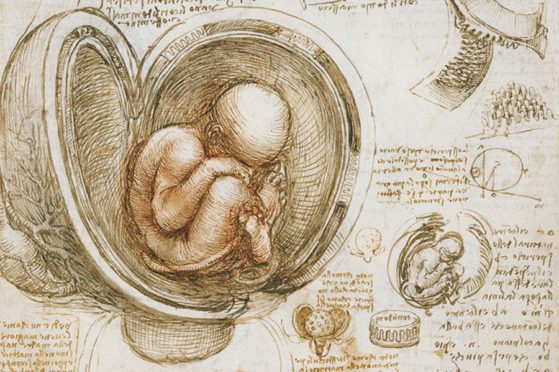The largest group of drawings by Leonardo da Vinci ever shown in Scotland forms a new exhibition opening on Friday.
Leonardo da Vinci: A Life in Drawing marks the 500th anniversary of the artist’s death and includes 80 of the Renaissance master’s greatest drawings, which have been selected entirely from the Royal Collection.
The exhibition explores the full range of the artist’s interests, providing a comprehensive survey of his life and an insight into the workings of his mind.
Every thematic grouping in the exhibition contains examples of his finest drawings and a number of Leonardo’s preparatory studies for paintings are on display, including a study for The Madonna and Child with St Anne and a lamb from 1508 and four of the six surviving preparatory studies for the Last Supper from 1495 to 1498.
One of these is the sole compositional study that exists for the painting, fluidly sketched by Leonardo on a sheet of paper covered with other drawings, and which is on display in Scotland for the first time.
Key anatomical studies include The skull sectioned (1489), The fetus in the womb (c.1511) and The cardiovascular system and principal organs of a woman (c.1509–10), on which Leonardo’s inky thumbprint can be seen.
The natural world is explored by Leonardo through detailed landscapes, studies of water and in numerous botanical studies, the finest of which were developed in preparation for the now lost painting Leda and the Swan.
Drawings of horses abound throughout his work, including studies for three equestrian monuments that were never realised.
The exhibition in Edinburgh is the culmination of a year-long nationwide event, which has given the widest-ever UK audience the opportunity to see the work of a man who is universally regarded as a genius.
Martin Clayton, Head of Prints and Drawings, Royal Collection Trust, said: ‘The drawings of Leonardo da Vinci are both incredibly beautiful and the main source of our knowledge of the artist.
“As our year-long celebration of Leonardo’s life draws to a close with the largest exhibition of his work ever shown in Scotland, we hope that as many people as possible will take this unique opportunity to see these extraordinary works, and engage with one of the greatest minds in history.’
Leonardo da Vinci: A Life in Drawing is at The Queen’s Gallery, Palace of Holyroodhouse, from November 22 until March 15.
